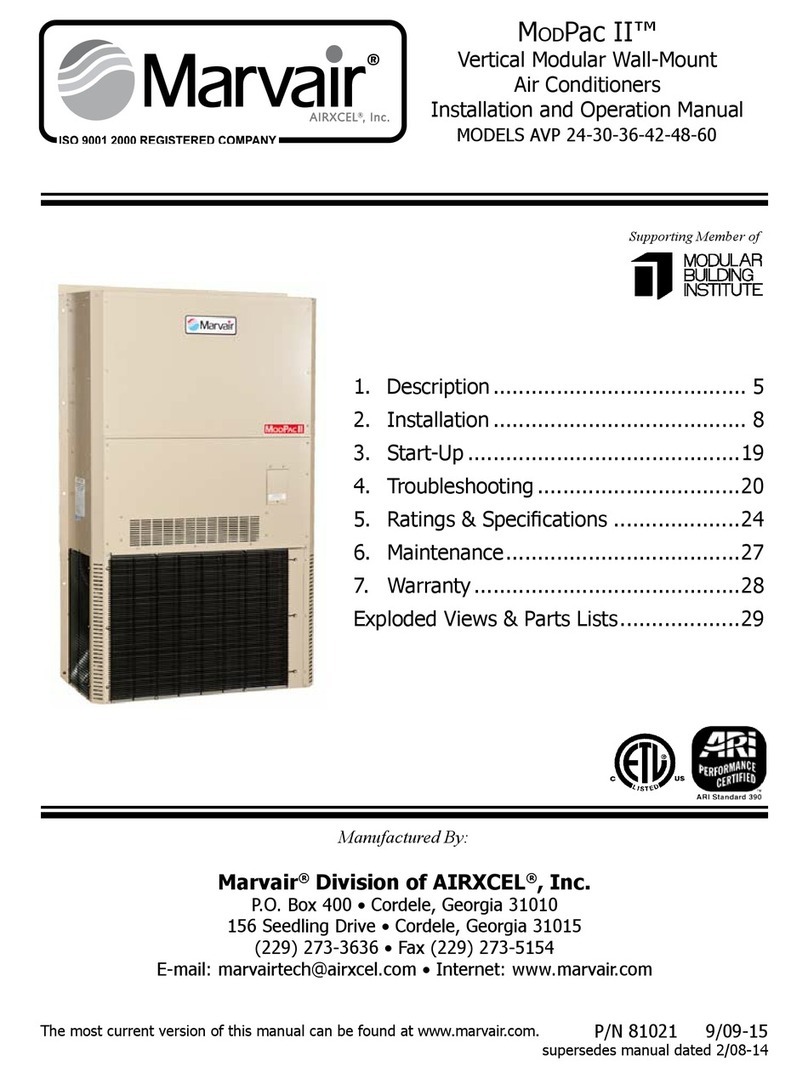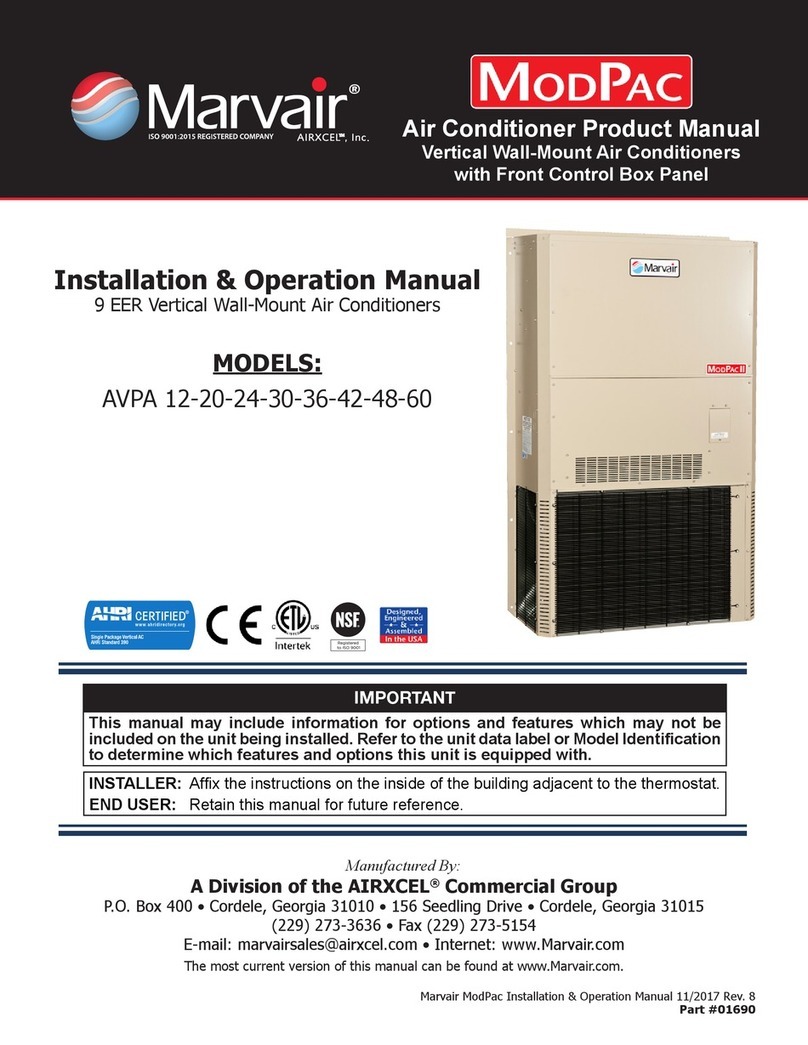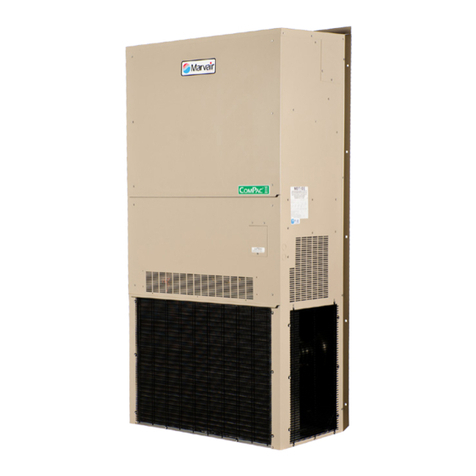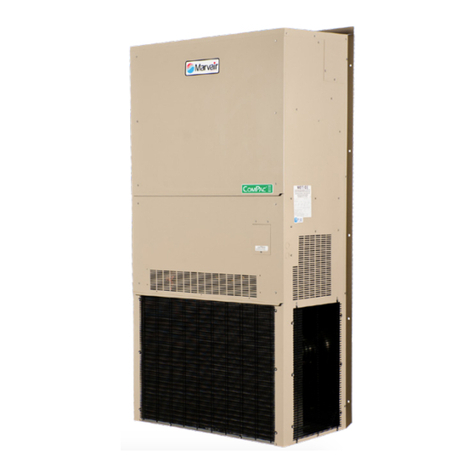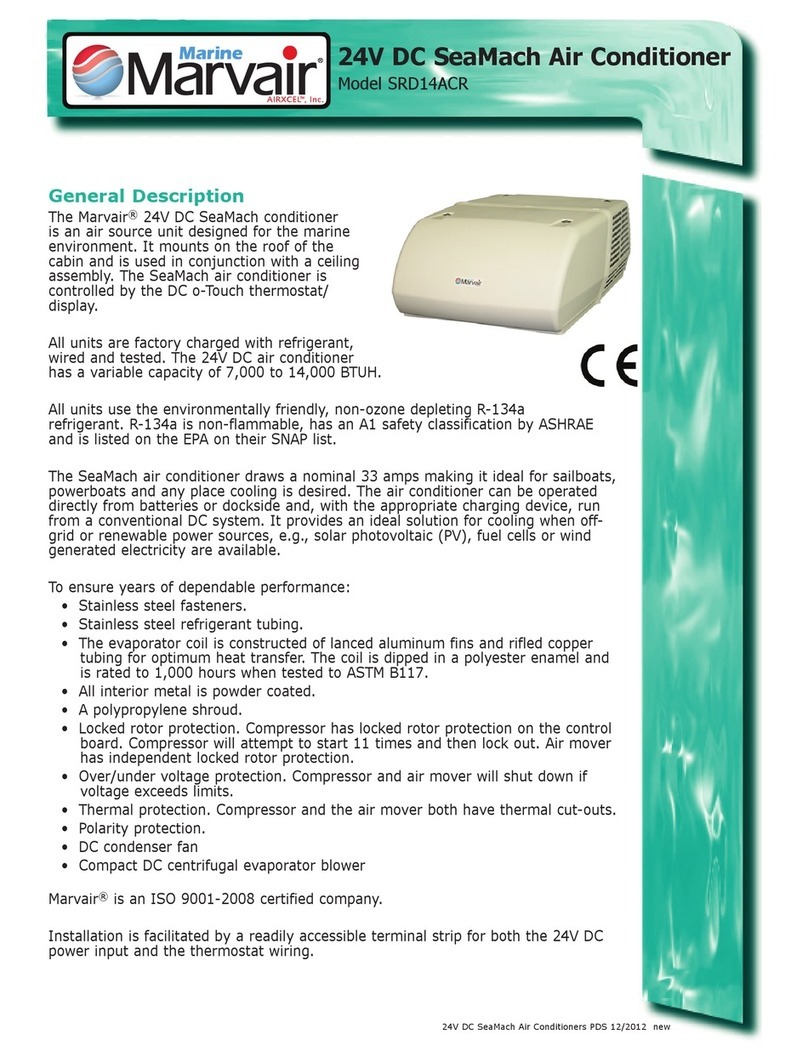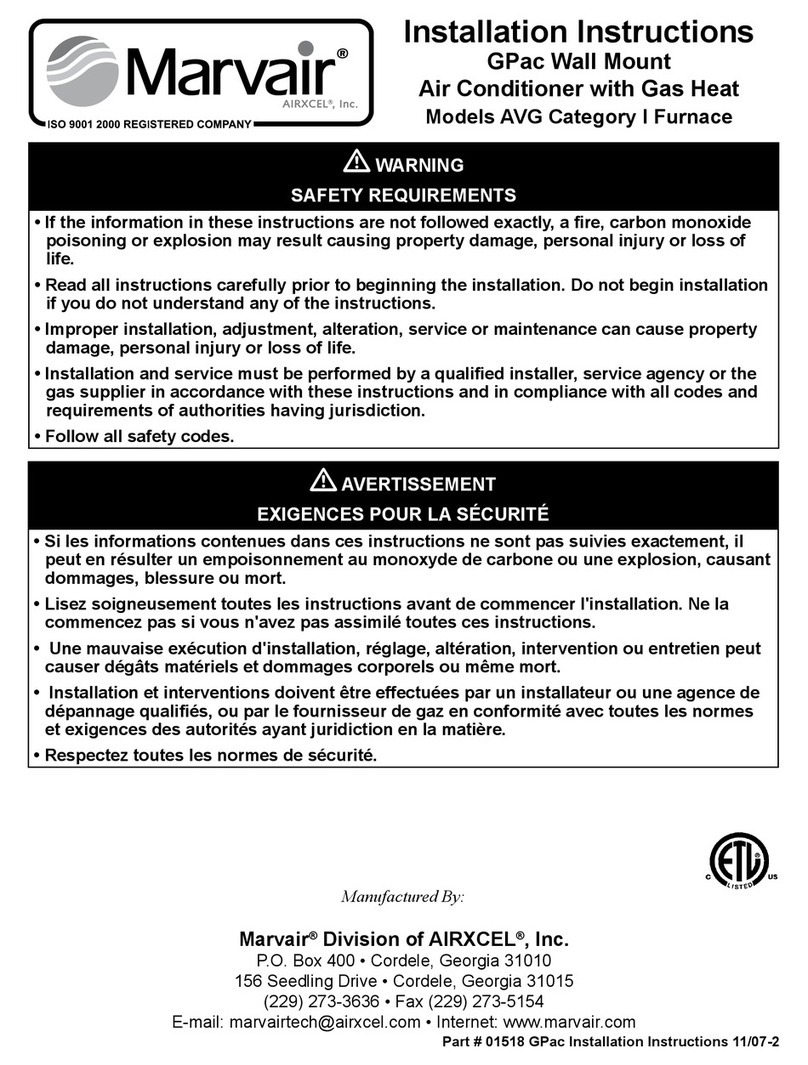
Chapter 6: The LiftAire I Series (ELA07, 6531_692 or
6571_662) Unit Installation
1. The air conditioner draws in topside air to cool the condensing coil. The condenser air is drawn
in from the end of the air conditioner (across the condensing coil), and discharged out through
the top of the appliance (through the discharge opening). To provide adequate condenser air
ow and access for service, allow a minimum of 15” (38 cm) of clearance on the top and all
sides of the air conditioner to any obstruction. To provide adequate condensing air ow, the
installer must adhere to the following guidelines:
a) The topside air path to the condensing coil should be as direct and non-restrictive as
possible.
b) Any decorative grille or louver used as an opening for condenser air ow should have a
minimum of 90 square inches (580.6 sq. cm) of free area.
c) Do not block or restrict the discharge air opening.
d) Insure that there are no structural members or panels which would serve to cause condenser
discharge air recirculation into the condenser return air.
2. Mount the air conditioning unit. The four shipping brackets may be used to secure the unit
to the mounting surface, or the installer may choose to use bands or other types of bracket. If
using a condensate evaporator with the air conditioner, elevate the air conditioner 4-5 inches
(10 -12 cm) to ensure that the condensate will drain from the air conditioner to the evaporator.
3. Attach the supply duct adapter (start collar) to the top of the unit with the four existing screws
in the unit top.
4. Mount the thermostat to the thermostat bracket using the screws provided with the thermostat.
5. Cut a 10 1/8" (25.7 cm) square opening in the canopy. The opening should be as remote as
possible from the intended position of the supply air distribution scoop and away from any heat
source such as lighting. There must be adequate space between the false ceiling and the cab top
to insure proper return air ow to the air conditioner. If not, the collar must be positioned in the
false ceiling.
6. Fasten the thermostat/bracket and the return air duct adaptor over the square opening with
screws or rivets. Use a quality duct tape to seal around the perimeter of the adaptor plate.
7. Install the supply air distribution scoop inside the conditioned space in an area as remote from
the return air as possible. Air from the scoop should have a clear path into the conditioned area.
Attach the scoop with adhesive, straps, brackets or by fastening through the part. If attaching
with fasteners, pre-drill any clearance holes in the scoop to prevent cracking during installation.
It is good practice to mount the scoop as far as possible from heat producing devices, such as
lights, xtures, etc.
8. Cut a 6" (15.2 cm) dia. hole in the roof to allow passage of the insulated 4" (10.2 cm) ex duct.
The duct connects between the 4" (10.2 cm) collar at the unit and the oval opening at the air
scoop. Secure the duct with 2 of the 4 cable ties provided in the accessory kit.
9. Secure the 7/8" (2.2 cm) I.D. condensate drain hose to the unit drain pan with the hose clamp
provided in the kit.
10. Mount the return air bonnet to the unit using existing unit screws. Clearance holes on the return
air bonnet align with existing unit fasteners. Use a good quality duct tape to seal the bottom and
side seams between the unit and return air bonnet.
11. Insure the return air lter is properly located inside the bonnet assembly.

